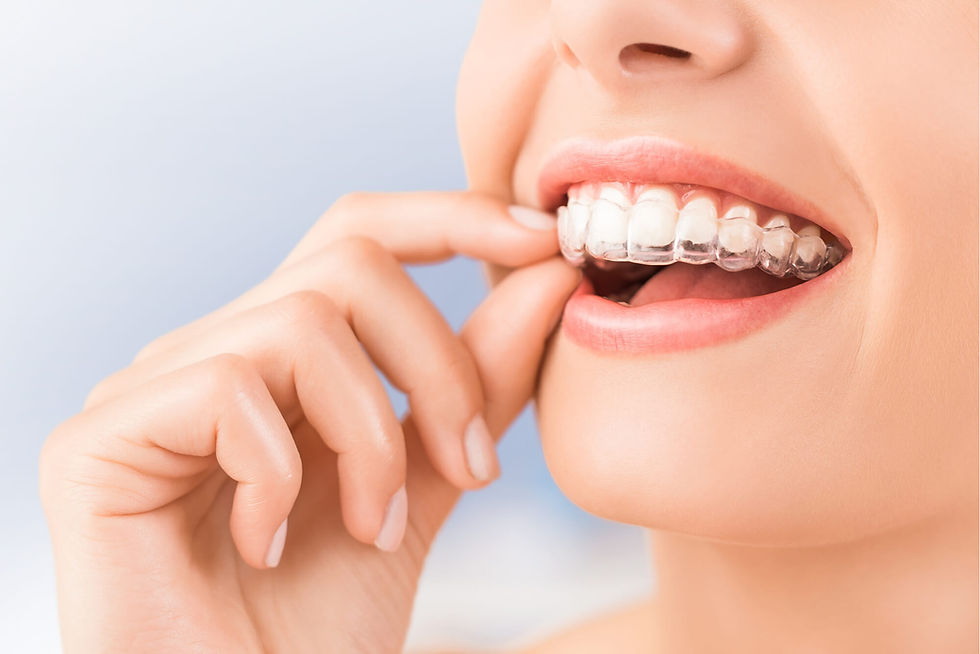How can One Determine if They are a Suitable Candidate for Oral Appliance Therapy?
- Agnes Bright
- Aug 29, 2023
- 3 min read

For individuals grappling with sleep apnea, finding an effective and comfortable treatment is paramount. Oral appliance therapy has emerged as a viable alternative to traditional interventions, offering a less invasive approach that suits many patients' preferences and needs. This article delves into the intricate details of determining suitability for oral appliance therapy, shedding light on its benefits and considerations. Specifically, we will explore the factors that determine if one is a suitable candidate for this therapy, with a focus on its relevance in the context of Houston's sleep apnea landscape.
Understanding Oral Appliance Therapy
Oral appliance therapy involves the use of custom-fitted devices worn during sleep to treat sleep apnea. These devices, also known as mandibular advancement devices (MADs) or dental sleep devices, work by repositioning the lower jaw and tongue to keep the airway open. This non-invasive approach can be particularly appealing to individuals who are averse to continuous positive airway pressure (CPAP) machines or surgical interventions.
Determining Candidacy for Oral Appliance Therapy
Type and Severity of Sleep Apnea: Oral appliance therapy is commonly recommended for individuals with mild to moderate obstructive sleep apnea (OSA). Severe cases might still require CPAP or surgery. A sleep study, preferably a polysomnography, helps determine the severity of sleep apnea and guides treatment decisions.
Anatomical Considerations: A suitable candidate for oral appliance therapy typically has an anatomically favorable oral structure. This includes having a well-defined and adjustable lower jaw, as the appliance's effectiveness relies on repositioning it to maintain a clear airway.
Patient Preference and Compliance: Candidates must be willing to comply with wearing the oral appliance consistently during sleep. Unlike CPAP, which requires continuous use, oral appliances are worn only at night. Patients who prefer a less intrusive treatment option may find oral appliances more appealing.
Physical and Dental Health: An evaluation of the candidate's dental health is essential. Oral appliance therapy might not be suitable for individuals with extensive dental work, such as missing teeth or advanced gum disease. The overall health of the jaw and teeth impacts the appliance's stability and effectiveness.
Body Mass Index (BMI): While oral appliance therapy can benefit individuals across a range of body types, those with a lower BMI often respond better. It's important to note that weight loss might improve the efficacy of oral appliances in some cases.
Side Effects and Tolerance: Candidates should discuss any previous experiences with dental devices or potential side effects, such as jaw discomfort or changes in bite, with their healthcare provider. These considerations help determine the likelihood of success and comfort with the therapy.
Comorbid Conditions: The presence of other medical conditions, such as temporomandibular joint (TMJ) disorders or chronic respiratory issues, may influence the suitability of oral appliance therapy. A comprehensive medical history review is crucial.
Oral Appliance Therapy in Houston's Sleep Apnea Landscape
Houston, a bustling metropolis with a diverse population, faces its share of sleep apnea Houston challenges. The city's healthcare providers are keenly aware of the need for tailored solutions that resonate with the community's preferences and lifestyles. Oral appliance therapy aligns well with this ethos, offering a patient-centric approach that accommodates Houstonians' varying needs.
Cultural Sensitivity: Houston's multicultural population means that healthcare solutions must be culturally sensitive and adaptable. Oral appliance therapy's non-invasive nature and potential comfort can resonate with individuals from various cultural backgrounds.
Urban Lifestyle: The urban lifestyle often leads to demanding schedules and limited time for self-care. Oral appliance therapy's convenience and ease of use can make it an attractive option for those seeking effective solutions without major disruptions to their routines.
Collaborative Care: Houston boasts a network of sleep specialists, dentists, and healthcare providers who collaborate to offer comprehensive care. This teamwork ensures that candidates are thoroughly evaluated and provided with the most suitable treatment options.
Conclusion:
Oral appliance therapy has emerged as a valuable tool in the arsenal against sleep apnea, offering a patient-friendly approach that suits many individuals' preferences and needs. The suitability for this therapy hinges on multiple factors, including the type and severity of sleep apnea, anatomical considerations, patient preferences, dental health, BMI, side effects, and comorbid conditions. For those seeking effective alternatives in Houston's dynamic healthcare landscape, oral appliance therapy stands as a promising solution, offering the potential for improved sleep quality and overall well-being. Consulting with a sleep specialist or dentist experienced in sleep apnea treatment is the crucial first step to determine if oral appliance therapy is the right fit for an individual's unique situation.



Comments